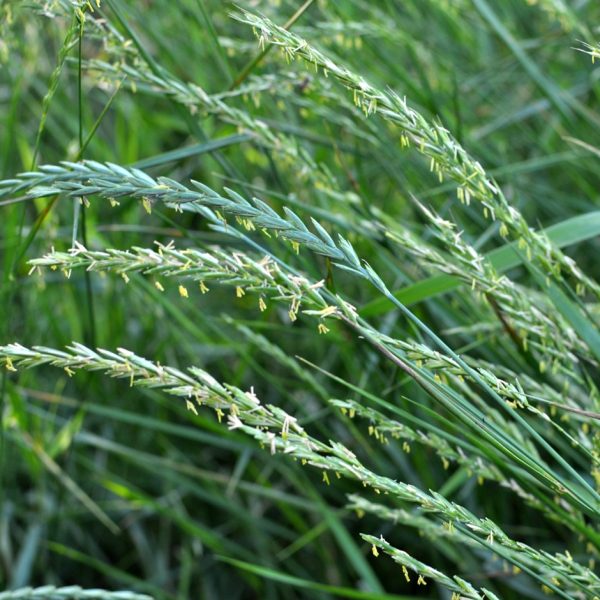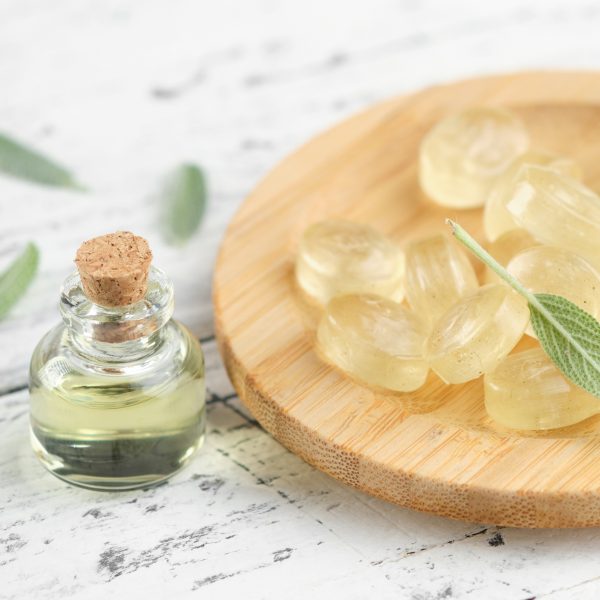-
How does it feel?
-
What can I use it for?
The traditional uses of black seed are wide reaching, supporting its reputation as a panacea.
As an aromatic culinary herb, dried black seed can aid in relieving flatulence, bloating, digestive spasm or colic. It has been used in treatments for intestinal worms, and has evidence for this in children.
Black seed is antimicrobial and anti-inflammatory, which makes it useful in cases of both topical and internal inflammation. The oil can be readily employed in cases of acne, eczema and psoriasis.
In India, it is used to support breast milk production.
-
Into the heart of black seed
Black seed, also known as “Habbatul Barakah”, is a remedy for all ailments according to common Islamic and Arabic belief. Nigella Sativa is mentioned in the bible, and was also described by Ancient Greek physicians such as Hippocrates, Pliny the Elder and Dioscorides.
Traditionally in regions across the Middle East, black seed is recommended for conditions largely related to the respiratory system like bronchitis, coughs, asthma and chest congestion. It is also recommended for dysmenorrhea, obesity, hypertension and gastrointestinal problems. It can also be used externally for eczema and swollen joints. Now over 150 studies have been conducted to investigate the pharmacological properties of black seeds.
-
Traditional uses
 The traditional systems of medicine that feature black seed include Traditional Chinese, Islamic, Arabic, Malay, Unani, and African medicine, and Ayurveda.
The traditional systems of medicine that feature black seed include Traditional Chinese, Islamic, Arabic, Malay, Unani, and African medicine, and Ayurveda.Black seed has been found in ancient archaeological sites in Turkey and Africa, most notably in the tomb of Tutankhamun, which is a testimony to how long humans have valued the plant.
Both Dioscorides and Ibn-Sinna (Avicenna) valued black seed. Dioscorides mentions its use as a food, and also recommends it as a medicine for a variety of ailments including headaches, catarrh, respiratory issues, toothache, intestinal worms, leprosy, and skin eruptions to name a few! Ibn-Sinna valued it for treatment of arthritis.
Black seed is also mentioned in several religious texts. It features in the Mishna, the Talmud, and the Bible.
In India, black seed has used to treat fevers, to promote breast milk production, relieve digestive disturbance. They were also used as purgatives and for promoting uterine contraction to stimulate the afterbirth.
-
Traditional actions
Herbal actions describe therapeutic changes that occur in the body in response to taking a herb. These actions are used to express how a herb physiologically influences cells, tissues, organs or systems. Clinical observations are traditionally what have defined these actions: an increase in urine output, diuretic; improved wound healing, vulnerary; or a reduction in fever, antipyretic. These descriptors too have become a means to group herbs by their effects on the body — herbs with a nervine action have become the nervines, herbs with a bitter action are the bitters. Recognising herbs as members of these groups provides a preliminary familiarity with their mechanisms from which to then develop an understanding of their affinities and nuance and discern their clinical significance.
-
Traditional energetic actions
Herbal energetics are the descriptions Herbalists have given to plants, mushrooms, lichens, foods, and some minerals based on the direct experience of how they taste, feel, and work in the body. All traditional health systems use these principles to explain how the environment we live in and absorb, impacts our health. Find out more about traditional energetic actions in our article “An introduction to herbal energetics“.
Ayurvedic energetics
-
What practitioners say
 Digestive system
Digestive systemAs black cumin is a culinary herb, it has similar properties for the digestive system as other spices. This makes it helpful for easing wind or digestive spasm, bloating, and associated colicky pains. It can be added to cooking for these actions.
It also has a reputation for assisting the treatment of intestinal worms. For this, it is advised to see a qualified herbalist.
Reproductive system
In India, Nigella is frequently used to promote the production of breast milk. It is also considered an emmenagogue, which means that it may promote menstruation. Any herb with this action should not be used in pregnancy.
Respiratory system
Traditionally, the seed has been used as an expectorant and may help to reduce catarrh. The antibacterial, antitussive and bronchodilators effects of black seed are helpful in respiratory infections and asthma.
Integumentary system (skin)
Black seed oil is a well known product that can be used topically to aid in inflammatory skin conditions, such as eczema and psoriasis. It is a common addition to skin care routines, and may be added to an oil mix depending on what is needed.
-
Research
 There has been a good deal of study into Nigella sativa’s medicinal value, as it is has been considered a panacea for such a long period of time.
There has been a good deal of study into Nigella sativa’s medicinal value, as it is has been considered a panacea for such a long period of time.Studies exploring the antimicrobial properties of the oil have found that black seed is antibacterial, antifungal and antiviral. The extract has been studied against antibiotic resistant Staphylococcus aureus and Pseudomonas aeruginosa with success. The extract was also found to be antifungal against Candida albicans. In another study, participants with hepatitis C were given black seed capsules for three months. The study found that the viral load decreased.
Black seed has been investigated in asthmatic conditions with favourable results. It has demonstrated anti-inflammatory activity, a key aspect of the pathogenesis of asthma. It also improved expiratory flow. Bronchodilation and an improvement in pulmonary function in asthmatics was observed after a dose of Nigella.
Nigella has been the subject of exciting studies investigating COVID-19 prevention and treatment. As inflammation of respiratory tissue is also included in the pathogenesis of Covid, Nigella’s benefits in patients with asthma also apply here. Nigella may also block the binding of SARS-COV-2 to ACE2 receptors. These properties are largely due to its secondary metabolites
Nigella sativa’s potential as a cardioprotective agent has been studied. In a study containing 108 participants with mild hypertension, Nigella supplementation reduced both systolic and diastolic blood pressure. An animal study suggests that thymoquinone may improve lipid profiles.
Black seed is highly antioxidant, due to the constituents found in the volatile oil. This has far-riding benefits for a number of pathologies, such as diabetes, asthma, and cancer.
The use of black seed as an anthelmintic has been studied in children with cestode infections. The study found that the seed was beneficial at a dose of 40 mg/kg with no adverse effects.
A small randomised control study observing participants with rheumatoid arthritis were treated with Nigella sativa oil for eight weeks. The study found that inflammatory cytokines and oxidative stress was significantly reduced in the treatment group.
-
Did you know?
Cuneiform tablets in ancient Assyria have been found to explain the process of making a preparation for fumigation that included black seed. This preparation was used to dispel “ghost possession”.
Additional information
-
Botanical description
The genus Nigella is a rather small one within the Ranunculaceae (buttercup) family, consisting of 15
species (1). Nigella Sativa is an annually flowering plant that grows up to 20-30cm in height. It is native to western Asia and is grown across the Mediterranean and Asia as a common garden plant.Nigella has pale blue or white flowers, with long striated leaves. The flowers emerge in summer, and the seed heads form in late summer. The seed capsule holds several compartments of black, triangular seeds. It can seed so readily that some consider it a weed.
Love-in-a-mist (Nigella damascena) is a related species of plant and is often found as an ornamental. Nigella damascena is not a suitable medicinal alternative to Nigella sativa.
-
Common names
- Black seed
- Black cumin
- Black caraway
- Roman coriander
- Small fennel
- Fennel flower
- Kalojira (India)
-
Safety
An animal study of the toxic potential of Nigella sativa concluded a wide margin of safety in using the plant. However, as it has a traditional use as an emmenagogue, use in pregnancy is not recommended.
-
Preparations
- Black seed is often taken as a cold pressed oil
- Dried seeds
-
Dosage
1-10g per day of dried seed
3-12ml per day of 1:3 tincture of seed
Cold pressed oil: Start at 1tsp per day, working up to 3 tsp a day.
-
Plant parts used
Seeds
-
Constituents
- Volatile oil (0.4-2.5%) – thymoquinone (30-48%), dithymoquinone (aka nigellone), trans-antheole, limonene, carvone, P-cymene, carvacrol, α-thujene, β-pinene
- Sterols and saponins – α- and β-sitosterol, stigmasterol, campesterol, α-hederin
- Phenolic compounds – vanillic acid, quercetin, kaempferol, apigenin
- Alkaloids –
- Isoquinoline – nigellicimine, nigellicimine-N-oxide
- Pyrazole – nigellicine, nigellidine
- Fatty acids

-
Habitat
Black seed is native to South Asia, North Africa and Southern Europe, often found growing in waste places, arable land and waysides.
-
Sustainability
This species has not yet been assessed for the IUCN Red List of at Risk or endangered species.
-
Quality control
Herbal Medicines are often extremely safe to take, however it is important to buy herbal medicines from a reputed supplier. Sometimes herbs bought from unreputable sources are contaminated, adulterated or substituted with incorrect plant matter.
Some important markers for quality to look for would be to look for certified organic labelling, ensuring that the correct scientific/botanical name is used and that suppliers can provide information about the source of ingredients used in the product.
A supplier should be able to tell you where the herbs have come from. There is more space for contamination and adulteration when the supply chain is unknown.
-
How to grow
Black seed is easy to grow in moderate to warm climates, and is fairly resilient to pests and diseases.
- Black seed will grow in any well-drained soil in full sun.
- Seeds may be sown in situ from mid-spring going into early autumn. Lightly cover the seeds. It should take about one or two weeks for Nigella species to germinate once the temperature reaches 15 degrees.
- Black seed prefers soil with good drainage and of a pH around 6 to 7. It can survive dry spells, however, it is advised to water them during very dry spells, and supply organic fertiliser every few weeks.
- Ideally, black seed will be located in a garden flower bed or in a wildflower meadow. These plants do best in a sunny area. If you are growing as an ornamental garden plant then, they do well in numerous circumstances, such as in containers, as a patio feature plant, in borders, beds, coastal, and cottage gardens.
-
Recipe

Black Seed magic dressing from Sidechef Black seed salad dressing (from Sidechef)
Ingredients:
- 1 tsp Black seed powder
- 1 tsp honey
- 1 tsp coarse Dijon mustard
- 1 lemon, juiced
- 1 glove garlic, finely chopped
- 1/4 cup water
- 1 pinch sea salt
Method:
- Combine all ingredients in a bowl. Whisk together and serve fresh.





























 The traditional systems of medicine that feature black seed include Traditional Chinese, Islamic, Arabic, Malay, Unani, and African medicine, and Ayurveda.
The traditional systems of medicine that feature black seed include Traditional Chinese, Islamic, Arabic, Malay, Unani, and African medicine, and Ayurveda. Digestive system
Digestive system There has been a good deal of study into Nigella sativa’s medicinal value, as it is has been considered a panacea for such a long period of time.
There has been a good deal of study into Nigella sativa’s medicinal value, as it is has been considered a panacea for such a long period of time.






